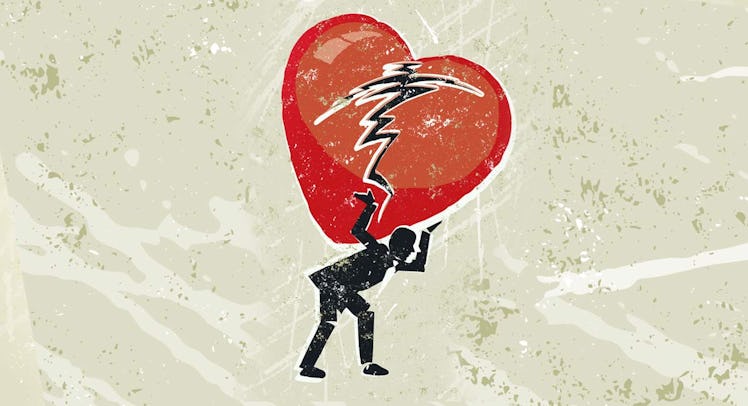The Key to Finding Happiness After a Divorce
An award-winning psychologist on how to push through the pain and get your post-marriage life back on track.

Whether it comes as a surprise, is a mutually agreed upon arrangement, or falls somewhere in between, divorce comes with its fair share of pain — emotional, yes, but also physical. “The same place in your brain that’s activated with physical pain when you’re having a heart attack, is also activated when you’re heartbroken,” says Dr. Carolina Castaños, an award-winning psychologist and the founder of MovingOn, a 14-week program designed to help people through breakups. “So your body is physically hurt. And when you’re having a physical problem, a heart attack, or a stroke, you take care of yourself. You go to the hospital, you take your pills, you take it easy, you do whatever you need to do.” However, the scars left by a failed marriage often go unattended.
Dr. Castaños spent years working with patients who were struggling after coming out of broken relationships. Seeing how anxious, depressed and under pressure they were, Castaños came to a revelation. “What I realized is that once a week was not enough for them,” she says. “I’d ask them, ‘How was your week?’, and they’d be like, ‘It was terrible. I’ve been having panic attacks, or I’m super irritable.’ So I started thinking, I need something to help all of these people. I need to find a way to be with them when I’m not with them.”
For men to cope with the idea of their marriage ending, Castaños says it’s important to remember that it’s a grief process. “You’re grieving. It’s a loss,” she says. “And when you grieve, you have to allow yourself to feel. Because if you don’t, and you just keep all those emotions inside, they come out in different ways.”
Those ways, she says, can be addictions like alcohol, drugs, food, or even obsessive behavior, such as diving into work or spending unhealthy amounts of time on social media.“They’re ways of distracting yourself from how you’re really feeling,” she says.
In the days and weeks following a divorce, Castaños says that it’s vital to connect with friends. People in those situations tend to not want to go out or socialize. But Castaños maintains that social interaction is what is going to help you survive a breakup. “That is key with any loss,” she says. “It’s important to find a friend, find a group, find someone that can hear you. And it’s important that whoever you choose is not judgmental towards you. You don’t need that. You’re doing that already!”
“You’re grieving. It’s a loss. And when you grieve, you have to allow yourself to feel. Because if you don’t, and you just keep all those emotions inside, they come out in different ways.”
Additionally, rather than throwing yourself into an obsessive spiral or sitting on the couch and drowning your sorrows in an entire pizza, Castaños suggests finding healthy, constructive ways of coping. Eating right and exercising is first and foremost, of course, but Castaños also notes that drawing or painting, even if you’re not artistically inclined, can have very therapeutic effects. “Drawing is a great way for people to express themselves,” she says. “The color and the texture, you can use pressure. It’s a very positive means of expressing your feelings.”
And, when all else fails, Castaños says, you can always write. “Write all that anger out,” she says. “The exercise of writing by hand is good. If you feel so angry at this other person, write it out! But do not ever send that letter. It is not intended to be read.”
Most importantly, Castaños says that a divorce is not meant to be the end of your story and that, if you allow it to, it can actually have positive benefits. Through self-examination and reflection, you can allow that breakup to reveal things about yourself that you didn’t know before and, hopefully, apply those lessons to your next relationship. “You will be better if you know how to,” she says. “You will be better for this. It can sink you, or it can make you fly.”